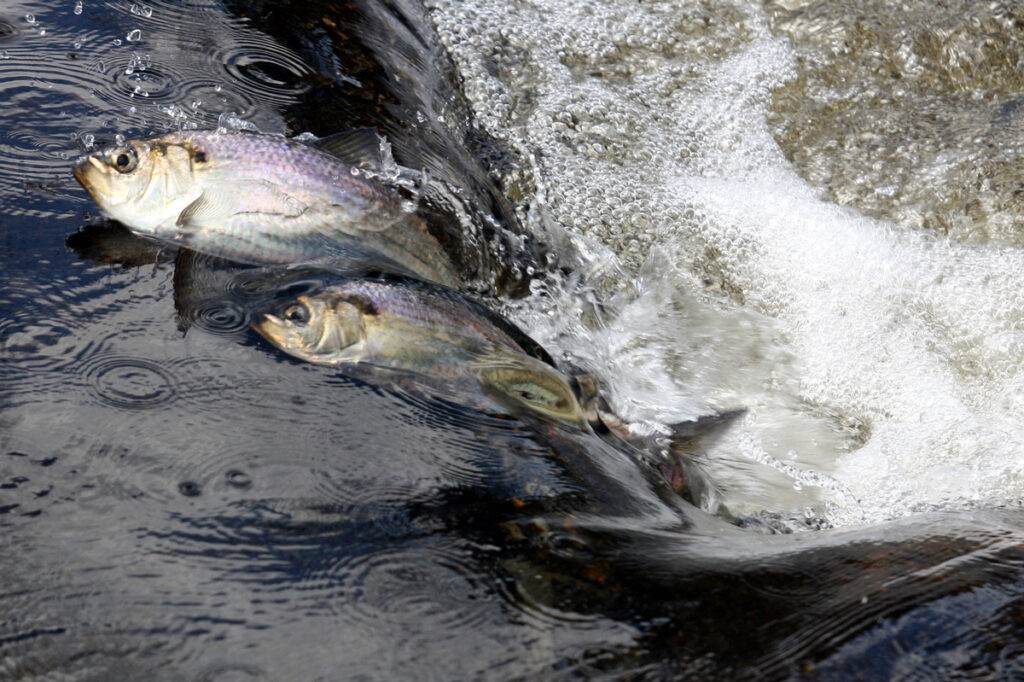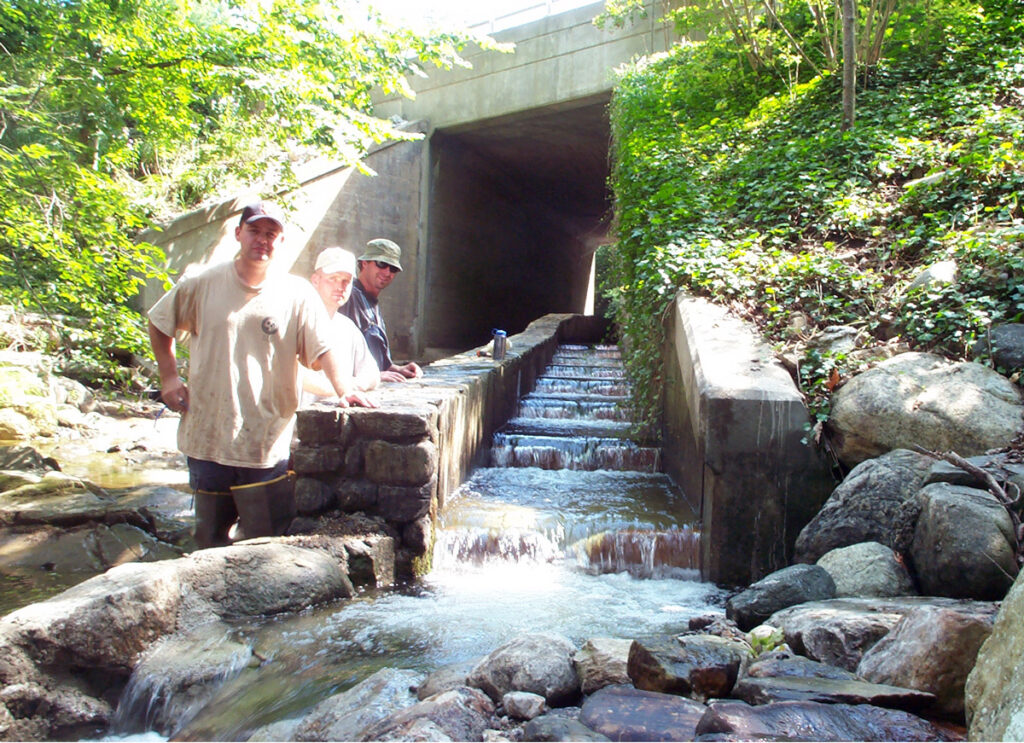Fish Passage
Delve into the critical issue of restoring and maintaining access to essential habitats for diadromous species along the Atlantic coast. With numerous barriers constructed for various human activities disrupting the natural flow of rivers and streams, the need to facilitate effective fish migration has never been more pressing. Explore how the Commission is addressing these challenges through innovative solutions and collaborative efforts to ensure the survival and recovery of key species.
Discover how the Atlantic States Marine Fisheries Commission is tackling the challenges of artificial barriers to fish migration. Dive into our strategic responses, policy innovations, and collaborative efforts aimed at restoring vital pathways for diadromous species along the Atlantic coast. Learn about our forward-thinking initiatives and ongoing projects that promise a future of improved connectivity and thriving aquatic ecosystems.

Background and Challenges
Artificial barriers, originally constructed for various utilities like flood control and transportation, pose significant obstacles to the migration patterns of diadromous fish species. These barriers disrupt life cycles and balance of ecosystems by preventing access to critical habitats necessary for reproduction and growth, leading to declines in fish populations over their historical range.
Commission Initiatives and Responses
In response to the growing concern over these barriers, the Commission organized a pivotal workshop in 2008, bringing together experts to discuss fish passage designs and experiences with regulatory processes. This led to the development of a series of strategic tasks aimed at enhancing fish passage and mitigating its challenges.
The tasks include:
- Develop a policy on passage efficiency for diadromous fishes
- Prioritize fish passage projects
- Identify effective fish passage approaches
- Recommend targets for increasing fish passage in each state
- Initiate an East Coast Fish Passage Plan
- Develop guidance for navigating the FERC dam relicensing process
- Task diadromous species technical committees with evaluating positive and negative consequences of providing fish passage
Policy and Efficiency Standards for Fish Passage
The Commission has established a clear policy that fish passage solutions must be non-injurious, minimize delays, and effectively support natural reproduction and habitat colonization. The preferred method is barrier removal, but when not possible, innovative technological solutions are sought to mimic natural conditions as closely as possible.
Policy on Passage Efficiency for Diadromous Species
Fish passage provided for ASMFC-managed species must be safe (non-injurious), timely (without undue delay), and effective. “Effective” means the technical approach is accepted by fish passage experts to be reasonable for the specific application. The primary objective is to pass as many upstream migrants as needed to support natural reproduction of anadromous species and colonization of nursery habitat (for eels). The most effective method is barrier removal. When removal is not feasible, parties must work together to develop fish passage using state-of-the-art technologies that will support restoration plans based on upstream habitat. It is recognized that (1) the percentage of migrants passed at each site will vary based upon watershed-specific factors including: location within the watershed, species, stream discharge, population size, and distribution of required habitat; (2) technical knowledge on effective passage designs is more advanced for some species than others, (3) all parties should commit to continued improvement of passage efficiency as technology advances and as site-specific information improves the understanding of restoration in the watershed.
Collaborative Efforts and Technological Advances
The Fish Passage Working Group, comprising experts from various agencies and organizations, was formed to carry out the tasks set forth by the Commission. Their work has led to significant advances in fish passage technologies and methodologies, particularly focusing on unique challenges like those faced by the American eel.

Ongoing Projects and Future Directions
Efforts to improve fish passage continue with projects like The Nature Conservancy’s Northeast Aquatic Connectivity Project, which helps prioritize fish passage initiatives. As technology and ecological understanding evolve, the Commission and its partners are committed to enhancing fish passage strategies to restore and maintain healthy diadromous fish populations along the Atlantic coast.
Related Documents
- ASMFC Workshop on Fish Passage Issues Impacting Atlantic Coast States (April 2008)
- ASMFC Guidance Document on Upstream Fish Passage Technologies for Managed Species (September 2010)
Get Hooked on ASMFC News
Dive into the latest updates and catch all the important news by joining our newsletter mailing list. Stay in the loop with meeting agendas, fisheries management news, and more.